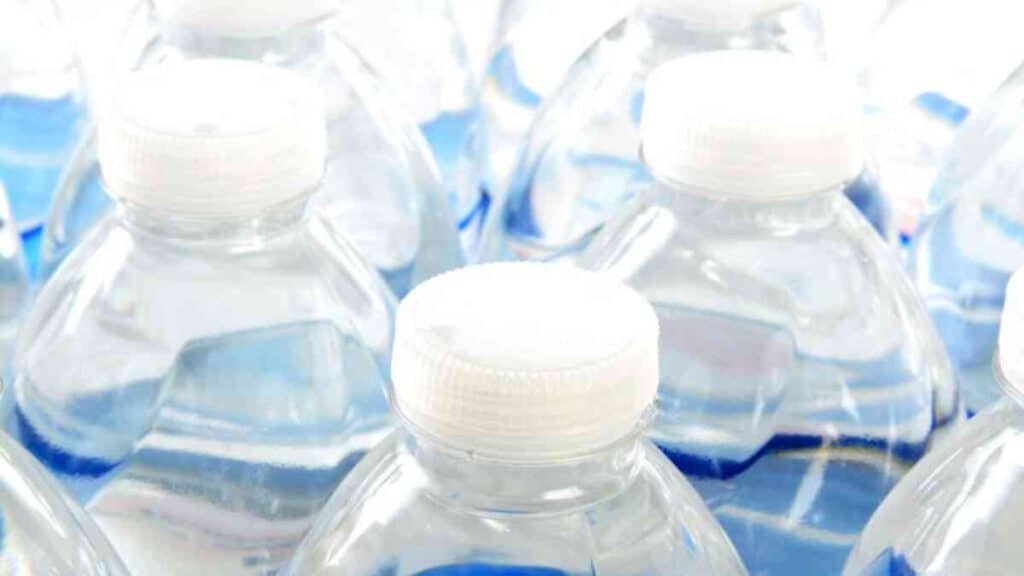You might know that fluoride is a natural mineral found in various foods and water, a fundamental component of healthy living known primarily for its role in dental health. Yet, many of us remain unaware of its importance and the implications too little or too much of it may have on our health. From strengthening tooth enamel and preventing tooth decay, to its role in maintaining the overall dental health, fluoride serves a profound purpose.
In this blog, we will delve deeper into “The Basics of Fluoride”, breaking down its origin, usefulness, as well as potential risks linked with overconsumption, particularly in children. Our discussions will span a broad spectrum of topics surrounding fluoride, from understanding water fluoridation and assessing its implications for infants, to evaluating the potential dangers of overexposure to fluoride. This will arm you with the requisite knowledge to make an informed decision about fluoride management for yourself and your family.

The Basics of Fluoride
Fluoride, found naturally in the earth’s crust and soil, is an essential mineral that plays a significant role in the dental health of humans. Its presence in a variety of foods, including many species of fish and an array of vegetables, provides most people with their necessary fluoride intake. However, for certain individuals, dietary intake alone may not be sufficient. Factors such as specific genetic predispositions or poor oral hygiene practices could make them more susceptible to tooth decay, potentially necessitating additional sources of fluoride.
Among its numerous benefits, fluoride serves to harden tooth enamel, which is paramount in safeguarding against decay. The result of this protective function is twofold. The most direct impact is that it renders teeth more resistant to acid attacks. Notably, these attacks, which could lead to tooth decay, often originate from the acids produced when we consume sugary foods and drinks.
Another indirect but crucial benefit of fluoride is that it restricts the rate at which bacteria can break down sugars into harmful acids. The significance of this function is that the acid produced by bacteria in our oral cavity, when mixed with sugars, leads to the deterioration of tooth enamel and consequently, the formation of cavities. The presence of fluoride, therefore, reduces the production of this harmful byproduct and diminishes the likelihood of cavity formation.
Lastly, the visual appearance of our teeth also stands to benefit from fluoride. This mineral works to prevent staining by strengthening our teeth, allowing them to resist discoloration from the food and drinks we consume. This ensures protection from the damaging effects on our enamel caused by staining agents found in coffee, tea, red wine, and other food and drinks.
Therefore, fluoride is not only important, but indispensable for maintaining oral health. Its presence in our diets helps keep our teeth strong, resilient to cavities, and resistant to unsightly staining, ensuring a healthy and bright smile for everyone. Notably, while most people get enough fluoride from their diet, it’s crucial to recognize when additional intake might be required, like when individuals are at a higher risk of tooth decay due to genetics or poor oral hygiene.
What is Fluoridated Water?
Fluoridated water is a term used to describe water treated with fluoride. This process is called water fluoridation. Water fluoridation is the controlled addition of fluoride to the public water supply. The purpose of this is to reduce tooth decay, especially in children, and improve the overall dental health of the general population.
Fluoride had been added to municipal drinking water since 1945 when Dr. Frederick McKay discovered that people living in areas with naturally occurring fluoride had fewer cavities than those without it.
The Centers for Disease Control and Prevention (CDC) recommends that municipal drinking water supplies contain 0.7 milligrams of fluoride per liter of water (about 0.7 mg/L). However, the Environment Protection Agency has only set fluoride to 4.0 mg/L.
The CDC recommends that fluoride prevents tooth decay and promotes dental health.

Is Fluoridated Water Good for Babies?
Fluoridated water has been a hotly debated topic for decades. Some people believe that it’s important for dental health and that the benefits of fluoride in drinking water outweigh any potential risks. Others believe that fluoride has too many unknowns to justify adding it to public water supplies.
If you’re pregnant or just had a baby, you may wonder if your little one should drink fluoridated water or use it to prepare ready-to-feed formula. The answer is complicated. It depends on where you live, how much fluoride is in your local water supply, and what kind of toothpaste your baby uses. But here’s what we know so far:
The American Dental Association (ADA) released a statement saying that babies’ drinks should be limited to any water with added fluoride because it could cause enamel fluorosis. Additionally, The Centers for Disease Control and Prevention (CDC) says infants who consume formula mixed with fluoridated tap water have an increased risk of developing dental fluorosis later in life.
It’s important to note that most studies have found that fluoridated water is beneficial to both adults and children alike. However, many studies indicate that there could be some negative effects on infants, especially formula-fed babies, who ingest too much fluoride.
Dangers of Using Fluoridated Water for Babies
The dangers of using fluoridated water for babies are many, and they include both physical and mental health concerns, including:
1. Fluoride consumption can lead to dental fluorosis
Dental fluorosis is a condition that results from the accumulation of fluoride in the child’s adult teeth and bones, causing them to become discolored and weakened over time. Dental fluorosis can also cause pain when eating or drinking hot or cold foods and beverages because they may irritate the weakened teeth. 40% of American adolescents have some signs of dental fluorosis, typically not visible until adulthood.
2. Fluoride consumption in large quantities has been linked to bone cancer in children and adults
Several studies have shown that drinking large amounts of fluoridated water can increase your risk of developing bone cancer later in life. Some studies have shown that drinking just one glass of fluoridated water can increase your risk of getting bone cancer by up to 70%.
3. Fluoride consumption has been linked to lower IQs in children who drink fluoridated water before they turn three years old.
A recent study found that exposed babies to fluoride in their first months of life may be at an increased risk of developing ADHD and brain damage in children. It also hinders their ability to absorb nutrients from food, leading to anemia, which is especially dangerous for babies. The study also found that breastfeeding mothers living in areas with fluoridated water have children at an increased risk of developing learning disabilities.

Is There Any Way To Make Fluoridated Water Safer For Babies?
Fluoride is an essential mineral found in water and some foods that can help maintain dental health by protecting against tooth decay. However, excess fluoride in water can lead to various health risks, and babies are particularly susceptible due to their developing systems. Therefore, if you’re concerned about the amount of fluoride that your baby is ingesting, consider employing the following strategies to make fluoridated water safer for your child:
- Avoid Using Tap Water As a Drinking Source For Your Baby: Tap water contains varying levels of fluoride depending upon the region’s water source and treatment procedures. As babies are more susceptible to the effects of fluoride than adults, it’s advised to avoid using tap water as a primary source of drinking water.
- Use Distilled or Reverse Osmosis Filtered Water For Preparing Infant Formula or Foods: Distilled and reverse osmosis filtered water has significantly less fluoride as compared to regular tap water. You can use these types of water for preparing infant formula or foods for your toddlers.
- Use Unfiltered Tap Water If Fluoride Levels are Below 0.6 parts per million (ppm): You can use unfiltered tap water for feeding your baby if it contains less than 0.6 ppm of fluoride, which is a standard deemed safe for babies by the World Health Organization. To know the fluoride levels in your tap water, you can call your local water department or a licensed lab can do the testing.
- Use Distilled, Reverse Osmosis Filtered Water or Boiled Water If Fluoride Levels Are High: If you’re residing in an area where the fluoride levels are higher than the recommended range (which is between 0.7 – 1 ppm), it is safe to use distilled water, reverse osmosis filtered water, or boiled water for your baby. Boiling your water can reduce the fluoride content, but remember to let it cool before giving it to your baby or preparing any infant formula or food.
Remember, the goal isn’t to completely eliminate fluoride intake, but rather to regulate it to safer levels. Always consult with your baby’s pediatrician or a qualified healthcare professional for personalized guidance regarding your baby’s fluoride intake.
Water Options for Babies
Water is a vital part of your baby’s diet. It helps to keep your baby hydrated and healthy, and it also aids in digestion. When it comes to water options for babies, there are many options available. Here are the most common types:
Boiled Water
Boiled water is best for babies and toddlers. Boiling water will kill any bacteria that may be present in the water, making it safe for consumption. If you choose this option, make sure that you use only boiled water when mixing infant formula or preparing other foods.
Distilled Water
Distilled water is another popular choice among parents because it has no impurities or traces of minerals like fluoride or chlorine that can negatively affect children’s health. Distilled water is inexpensive, but you’ll need to purchase distilled water instead of regular tap water if you want to use this filtration system at home.
Purified Water
Purified water is simply water that has been filtered through a process that removes impurities like dirt and bacteria. It is often used in baby bottles because it is free of chemicals or minerals that may be present in tap water, which could cause digestive problems for infants.
Filtered Water
Filtered water is similar to purified water except that it has been filtered through a charcoal filter to remove any toxic chemicals that may be present in tap or bottled water. Filtered water can also be used for cooking foods for babies who aren’t eating solid foods yet. For best results, use a Brita filter pitcher or other pitcher brands with an extra-fine filter system, such as Keurig.
If I Can’t Use Fluoridated Water, How Can I Make Sure My Baby Teeth Are Healthy?
It’s not ideal for babies to drink fluoridated water at a very young age it might make them sick. But there are other ways to ensure your baby has healthy teeth, and they are easy.
The American Dental Association recommends brushing your infant’s teeth with a wet washcloth or gauze pad at least once a day until they’re old enough to brush their teeth.
You can use non-fluoride toothpaste when their first tooth erupts, usually around 6 months old. Once your child reaches their first birthday, you should use fluoride-containing toothpaste and mouth rinse twice daily: once before bedtime and once in the morning.
Your pediatric dentist will apply fluoride varnish starting when your baby is 6 months old at well-child visits to help prevent or slow down tooth decay.
You may also consult your pediatric dentist for fluoride supplements if you’re concerned about your child’s teeth health. Your child’s dentist may give your child a prescription for fluoride drops or tablets.

Conclusion
In conclusion, fluoride is clearly a double-edged sword when it comes to dental health. It plays an essential role in protecting against tooth decay and maintaining overall dental health. However, too much exposure can lead to numerous health concerns, particularly in babies and young children, such as dental fluorosis, reduced IQ, ADHD, brain damage, and anemia. The fluoridation of tap water, while offering benefits to adults and older children, adds a layer of complexity to these concerns. Thus, for parents seeking to protect the dental health of their infants, it is crucial to use fluoridated water with caution.
Your options for safe water include using distilled or reverse osmosis filtered water for preparing your infant’s food, monitoring the fluoride levels of your local tap water, and boiling water to reduce its fluoride content. However, do remember that the goal is not to eliminate fluoride but regulate it to safer levels for your child. Other than exposure through water, there are various ways to ensure that your child receives enough fluoride for dental health, like using fluoride toothpaste and mouth rinse, applying fluoride varnish as soon as the first tooth erupts and considering fluoride supplements if needed. Always seek professional medical guidance if you have any concerns. At the end of the day, balanced exposure to fluoride coupled with good oral hygiene practices is key to maintaining oral health for both you and your child.
Did you find this article helpful? Let us know in the comments below! We’d love to hear from you!



